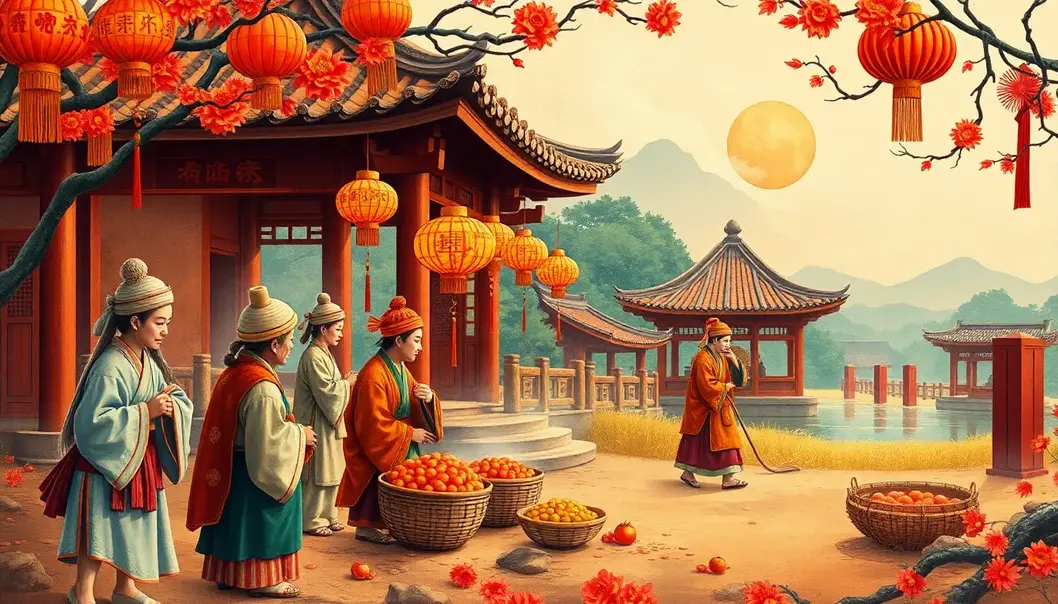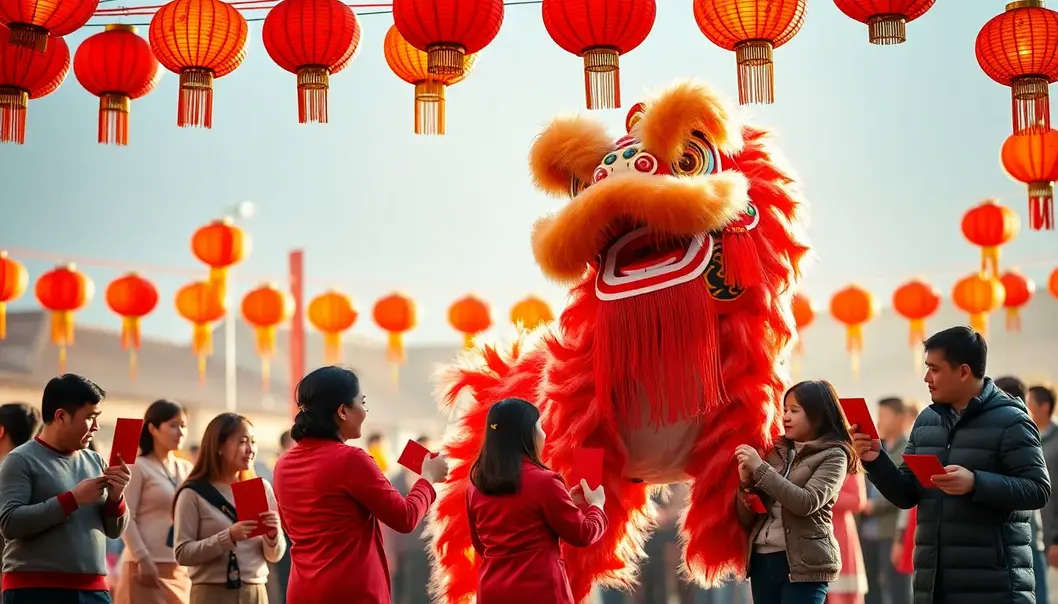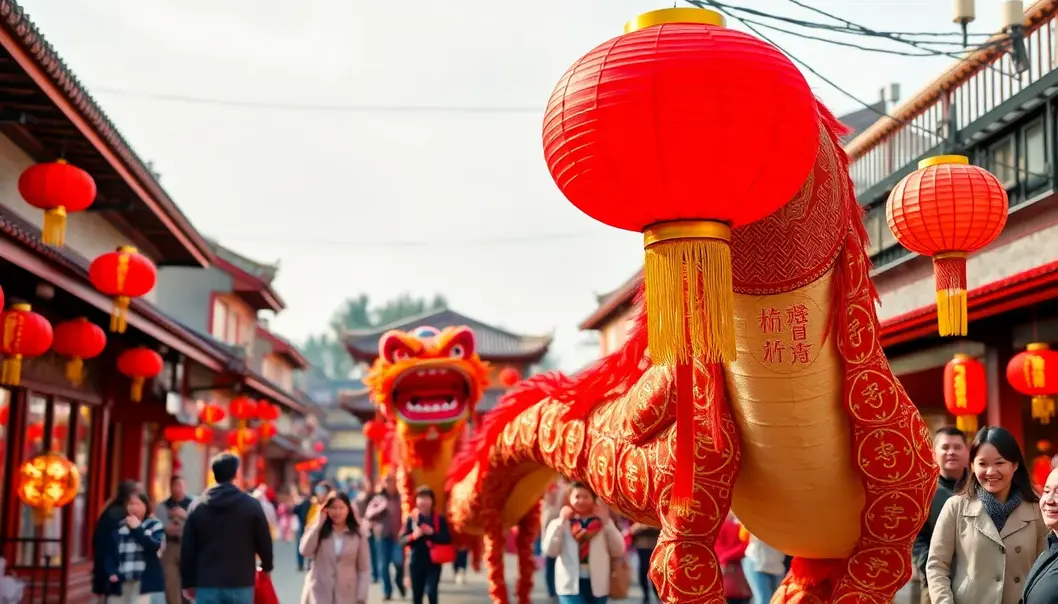Lunar New Year, celebrated by millions across Asia and around the globe, marks a vibrant start to the year based on the lunar calendar. It holds immense cultural and historical significance, with customs and traditions passed down through generations. From family reunions to elaborate feasts and colorful parades, each element of this festivity is imbued with deep meaning. Understanding its origins and cultural relevance offers insights into a celebration that transcends being merely a public holiday. This article delves into the profound history and significance behind Lunar New Year, providing a succinct yet engaging overview for busy professionals eager to expand their cultural knowledge.
Ancient Roots and Evolution

The Lunar New Year is celebrated by millions across Asia, deeply rooted in agrarian traditions that span several millennia. Its origins can be traced back to ancient China, where it was initially a festival marking the end of winter and the beginning of spring, a critical time in the agricultural calendar. This celebration was not just about enacting rituals to ensure a bountiful harvest, but also a time for communities to come together, reinforcing social bonds after a long, harsh winter.
Archaeological evidence indicates that as early as the Shang Dynasty (circa 1600–1046 BCE), Chinese agrarian societies had rituals for a prosperous year. These early celebrations aligned with the lunar calendar, which dictated the rhythms of planting and harvest. The festival evolved over subsequent dynasties, particularly during the Han Dynasty (206 BCE–220 AD), when many recognizable elements of the modern Lunar New Year took shape. It was during this period that the lunar calendar was standardized and elements like ancestor worship and feasting became integral to the festivities.
The evolution of Lunar New Year over centuries has been marked by both continuity and change. During the Tang Dynasty (618–907 AD), the festival became a nationwide celebration, emphasizing family reunions and the renewal of ties. Under the Qing Dynasty (1644–1912 AD), fireworks were introduced, thought to ward off evil spirits and bring good fortune. These adaptations have allowed the celebrations to resonate with successive generations, transcending the original agrarian context to become a globally recognized cultural event.
The spread of the Lunar New Year beyond China can be attributed to migration and diaspora. In countries like Vietnam, the festival is celebrated as “Tet,” while in Korea it’s known as “Seollal.” Each region has adapted the core themes of family, renewal, and gratitude to their own cultural contexts. For instance, in Vietnam, the kitchen gods are sent off with prayers for prosperity, while Koreans commemorate their ancestors with a morning ritual called “Charye.”
Modern-day celebrations are a fusion of historic practices and contemporary innovations. While the essence of family gatherings and traditional feasts remains intact, the digital age has introduced new methods of engaging with these ancient traditions. Digital red envelopes are becoming increasingly popular, allowing for the exchange of money and well-wishes across vast distances. Despite the changes, the celebration’s underlying values of unity, prosperity, and respect for heritage continue to bind communities together.
The dynamism of the Lunar New Year exemplifies the adaptability of cultural traditions in responding to societal shifts. It retains it ancient roots while embracing modernity, illustrating the festival’s enduring appeal. As we move to the next chapter, we will explore the rich tapestry of symbolism and cultural customs that define the Lunar New Year, providing further insight into the values they embody across Asian societies.
Symbolism and Cultural Traditions

The Lunar New Year, celebrated by millions across Asia, is more than just a passage into a new calendar year. It is a time when deeply held beliefs and cultural values are expressed through a myriad of symbols and traditions. The significance of these customs extends beyond the surface, embodying values such as prosperity, familial unity, and good fortune.
One of the most iconic symbols of Lunar New Year is the red envelope, or ‘hongbao’ in Mandarin. These envelopes, filled with money, are traditionally given to children and young adults by elder family members and friends. The red color symbolizes good luck and warding off evil spirits, while the act of giving money reflects hope for prosperity and financial success in the coming year. This tradition emphasizes the importance of generational respect and the passing of well-wishes from one generation to the next.
The vibrant and energetic lion dance is another prominent feature of Lunar New Year celebrations. Performed by skilled dancers wearing elaborate lion costumes, the dance is accompanied by the rhythmic beating of drums, cymbals, and gongs. The lion, a symbol of strength and courage, is believed to bring good fortune and drive away malevolent spirits. The dynamic movements of the lion, often performed in front of businesses and homes, are a testament to the communal spirit and the collective wish for prosperity and protection against misfortune.
Family meals during the Lunar New Year are a special time for bonding and affirmation of cultural identity. These meals often feature specific dishes that carry symbolic meanings. For instance, fish is served to represent surplus and bounty, while dumplings symbolize wealth because of their resemblance to ancient Chinese currency. The reunion dinners on Lunar New Year’s Eve are particularly significant, bringing family members together regardless of distance, accentuating the importance of familial ties and remembrance of ancestral roots.
In the midst of these vibrant traditions lies a deeper philosophical reflection on life’s cyclical nature. The Lunar New Year offers a time of renewal—shedding the old and embracing the new. It is a time to clean house, both physically and metaphorically, sweeping away bad luck, and preparing for the fresh opportunities that the new year heralds.
The customs practiced during the Lunar New Year are rich with meaning and continue to thrive in modern times. They serve as a poignant reminder of the cultural heritage and values that are cherished within Asian societies, ensuring these traditions are passed down through generations. This continuation of historical practices, from the simplest of red envelopes to the captivating lion dances, underscores a collective cultural identity grounded in themes of harmony, prosperity, and renewal.
Final words
Lunar New Year is not just a festival; it is an enduring cultural legacy connecting millions worldwide. Its rich history and traditions offer insights into diverse cultures. By understanding its significance, professionals can foster greater appreciation and inclusivity in various cultural contexts, enhancing both personal and professional relationships. As this vibrant celebration continues to evolve, it remains a testament to the enduring power of cultural heritage.
Enhance your cultural knowledge with more insights into global traditions today!
Learn more: https://www.culturalexplorer.com/lunar-new-year
About us
Cultural Explorer offers a platform for learning and exploring diverse cultural celebrations, heritage, and traditions from around the world to enhance your global perspective.

